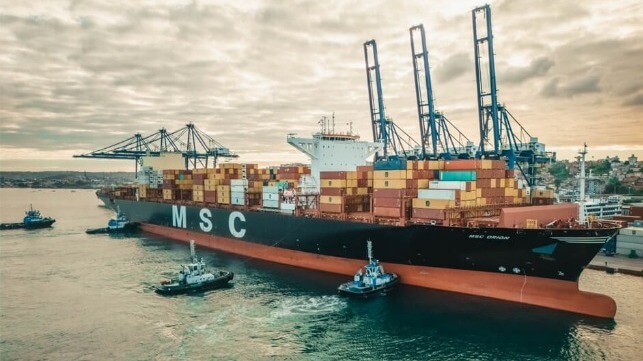Trevor Hunnicutt
Tue, October 22, 2024

Gurpatwant Singh Pannun, a 56-year-old dual U.S.-Canadian citizen, speaks during an interview in New York City
WASHINGTON (Reuters) - U.S. officials have told their Indian counterparts they want a speedy result and more accountability after their investigation into Indian involvement in a foiled murder plot against a Sikh activist in the United States, according to a U.S. official.
An Indian Enquiry Committee visited Washington last week to discuss India's own investigations after the Justice Department alleged an Indian intelligence official had directed plans to assassinate dual U.S.-Canada citizen Gurpatwant Singh Pannun, a Sikh separatist, last year.
"We've communicated really clearly that the U.S. government isn't going to feel fully satisfied until we see that meaningful accountability takes place," said a U.S. official who declined to be named. "We have been emphasizing that we hope that India will move as quickly as possible through their investigative process."
The Indian embassy in Washington did not immediately respond to a request for comment. Washington's message to Indian officials has not been previously reported.
Last week, an unsealed indictment showed that the United States had charged Vikash Yadav, described as a former officer in India's Research and Analysis Wing spy service, with directing the plot against a Sikh separatist in New York City.
The indictment alleged that beginning in May 2023, Yadav, described as an employee of the Indian government at the time, worked with others in India and abroad to direct a plot against Pannun.
The accusations have tested Washington's relations with India, which the Biden administration sees as a potential counterbalance to China's ambitions in the Indo-Pacific.
"India remains an incredibly important and valuable strategic partner," the U.S. official said. "We also have to have trust and an ability to work through very difficult issues like this transparently."
India has labeled Sikh separatists as "terrorists" and threats to its security. Sikh separatists demand an independent homeland known as Khalistan, which would be carved out of India. An insurgency in India during the 1980s and 1990s killed tens of thousands.
Pannun, the Sikh separatist, has alleged that Yadav was a "mid-tier soldier" assigned the task of organizing the assassination by higher-level Indian officials.
India has said little publicly since announcing in November 2023 it would formally investigate the allegations, and it has separately continued a diplomatic dispute with Canada over the June 2023 assassination of another Sikh leader.
Canadian Prime Minister Justin Trudeau said in September his country's intelligence agency was pursuing credible allegations that Prime Minister Narendra Modi's government was behind the killing of Hardeep Singh Nijjar, a Canadian Sikh separatist.
India has denied involvement in both incidents.
(Reporting by Trevor Hunnicutt; Editing by Don Durfee and Stephen Coates)
Former Indian spy rejects US charge in Sikh separatist murder plot, family says
Shahana Yasmin
Sun, October 20, 2024

A former Indian intelligence officer charged with directing a foiled assassination plot against a Sikh separatist leader in New York last year rejects the accusations, his family said.
Vikash Yadav, a former officer in India’s foreign intelligence service who was named by federal prosecutors for the first time in an unsealed indictment on Thursday, is charged with money laundering, conspiracy, and leading a murder-for-hire scheme.
According to the indictment, Mr Yadav was an officer in the Research and Analysis Wing, which is directly overseen by the Prime Minister’s Office.
India says it is investigating the allegations. It also claims that Mr Yadav is no longer a government employee, but won’t confirm if he has ever been an intelligence officer.
Mr Yadav’s cousin Avinash Yadav spoke to Reuters on Saturday at their ancestral village, Pranpura, some 100km from the capital New Delhi.
He said he had discussed the murder plot allegations with Mr Yadav, who described them as false media reports.
Avinash said he spoke to his cousin regularly but Mr Yadav had never said anything about being an intelligence officer.
“The family has no information. He never mentioned anything about it,” he said, referring to Mr Yadav’s supposed employment with the spy service.
“For us he is still working for the CRPF. He told us he is deputy commandant.” The CRPF is the Central Reserve Police Force, a federal paramilitary that Mr Yadav joined in 2009.
The cousin said he didn’t know Mr Yadav’s whereabouts, only that he lived with his wife and a daughter who was born last year.

A ‘wanted’ poster provided by the FBI shows Vikash Yadav who is criminally charged in connection with a foiled plot to kill a US citizen and Indian dissident in New York (AP)
Mr Yadav and his alleged co-conspirator, Nikhil Gupta, are accused of plotting the murder of Gurpatwant Singh Pannun, a American and Canadian citizen who founded Sikhs for Justice which advocates for the creation of an independent Sikh homeland called Khalistan in northwestern India.
The organisation is banned in India, which has designated Mr Pannun a “terrorist”.
Mr Gupta, who was extradited to the US from the Czech Republic earlier this year, is lodged in a Brooklyn jail. He has pleaded not guilty.
Mr Yadav was arrested in New Delhi on 18 December last year, a police officer told Reuters on condition of anonymity. He and an associate were charged with attempted murder, according to a filing in a Delhi district court.
Mr Yadav’s lawyer, RK Hindoo, said the charges brought against his client by Delhi police were “fallacious” and that there was “an international plot to bring shame on the government of India and my client”.
It is not known where Mr Yadav is now. The Washington Post, citing American officials, reported that he was still in India and that the US would seek his extradition.
“He has been working for the country,” Mr Yadav’s mother Sudesh Yadav said.
The indictment against Mr Yadav is a “grave example of the increase in lethal plotting and other forms of violent transnational repression targeting diaspora communities in the United States,” assistant attorney general Matthew Olsen of the US Justice Department said in a statement.
The accusations against Mr Yadav and Mr Gupta that seemingly implicate the Indian government follow similar charges made by Canada over the assassination of a Sikh separatist leader in June 2023.
India rejects the “preposterous imputations” made by Canadian authorities and decries it a political agenda of the Justin Trudeau government.
Canada has expelled six Indian diplomats, including high commissioner Sanjay Kumar Verma, “in relation to a targeted campaign against Canadian citizens by agents linked to the Government of India”.
New Delhi has retaliated by ordering the expulsion of six Canadian diplomats, including acting high commissioner Stewart Ross Wheeler.


































